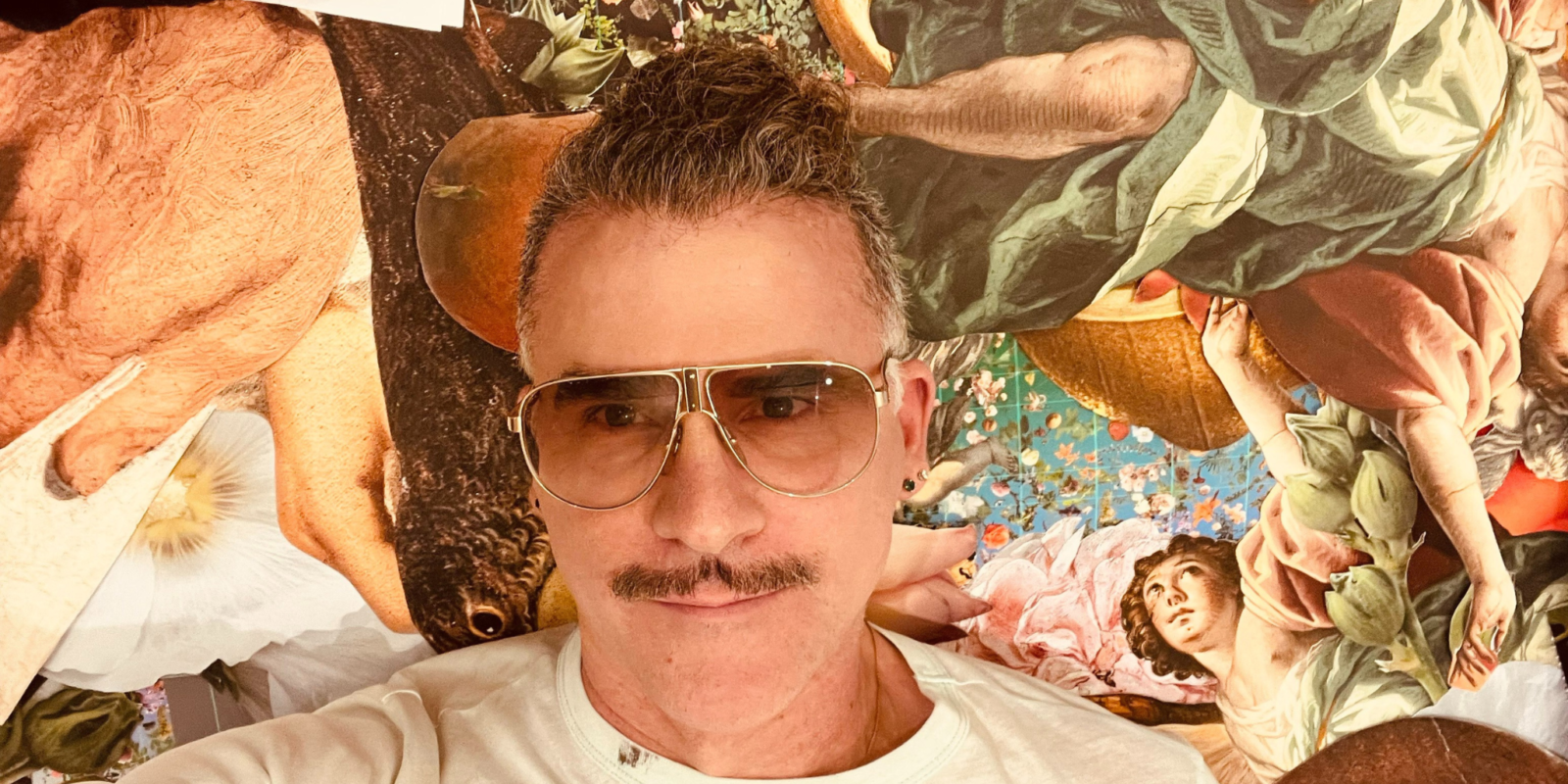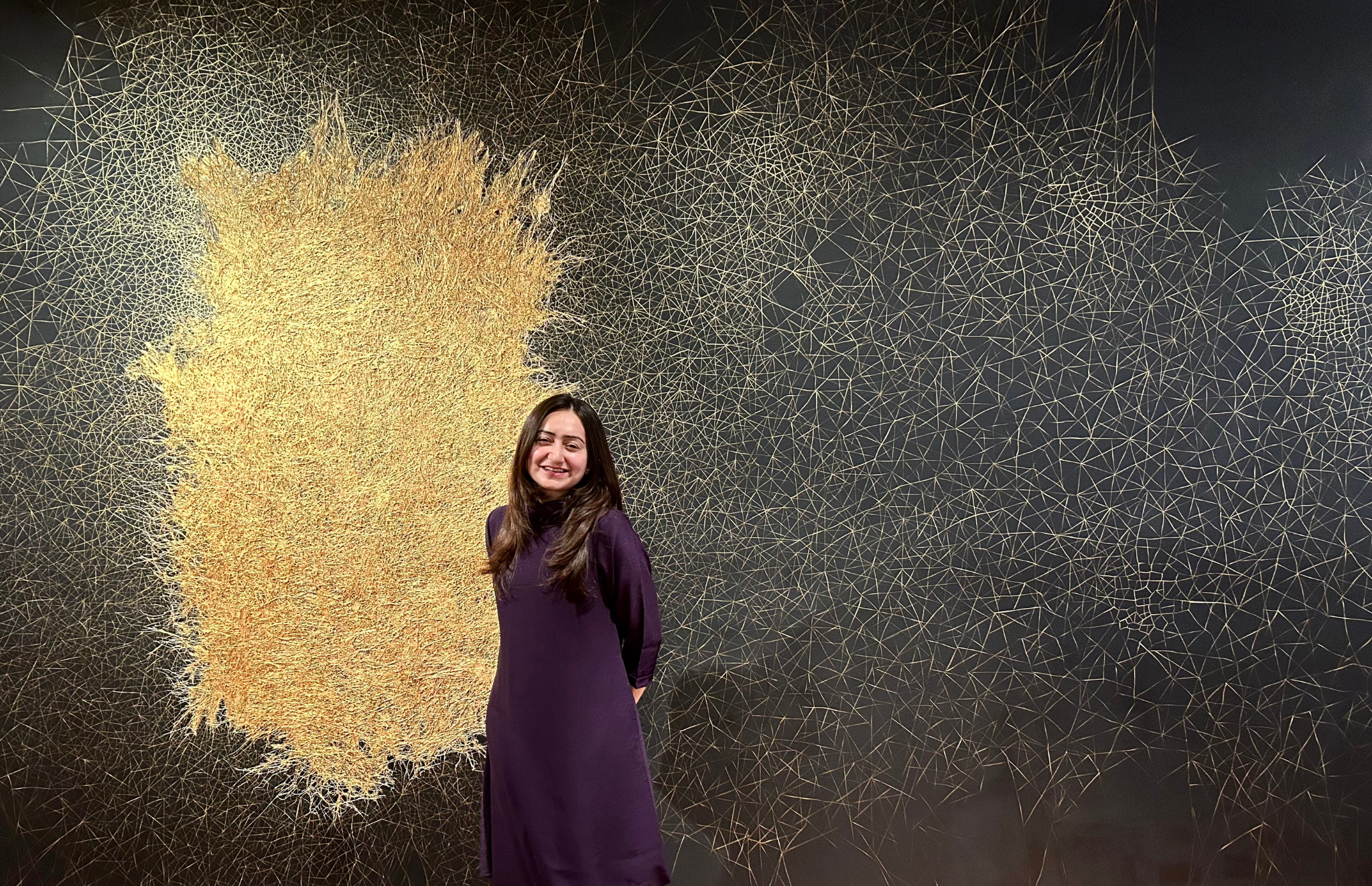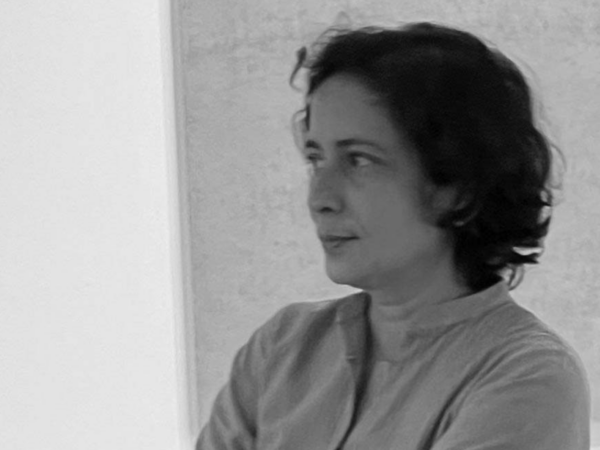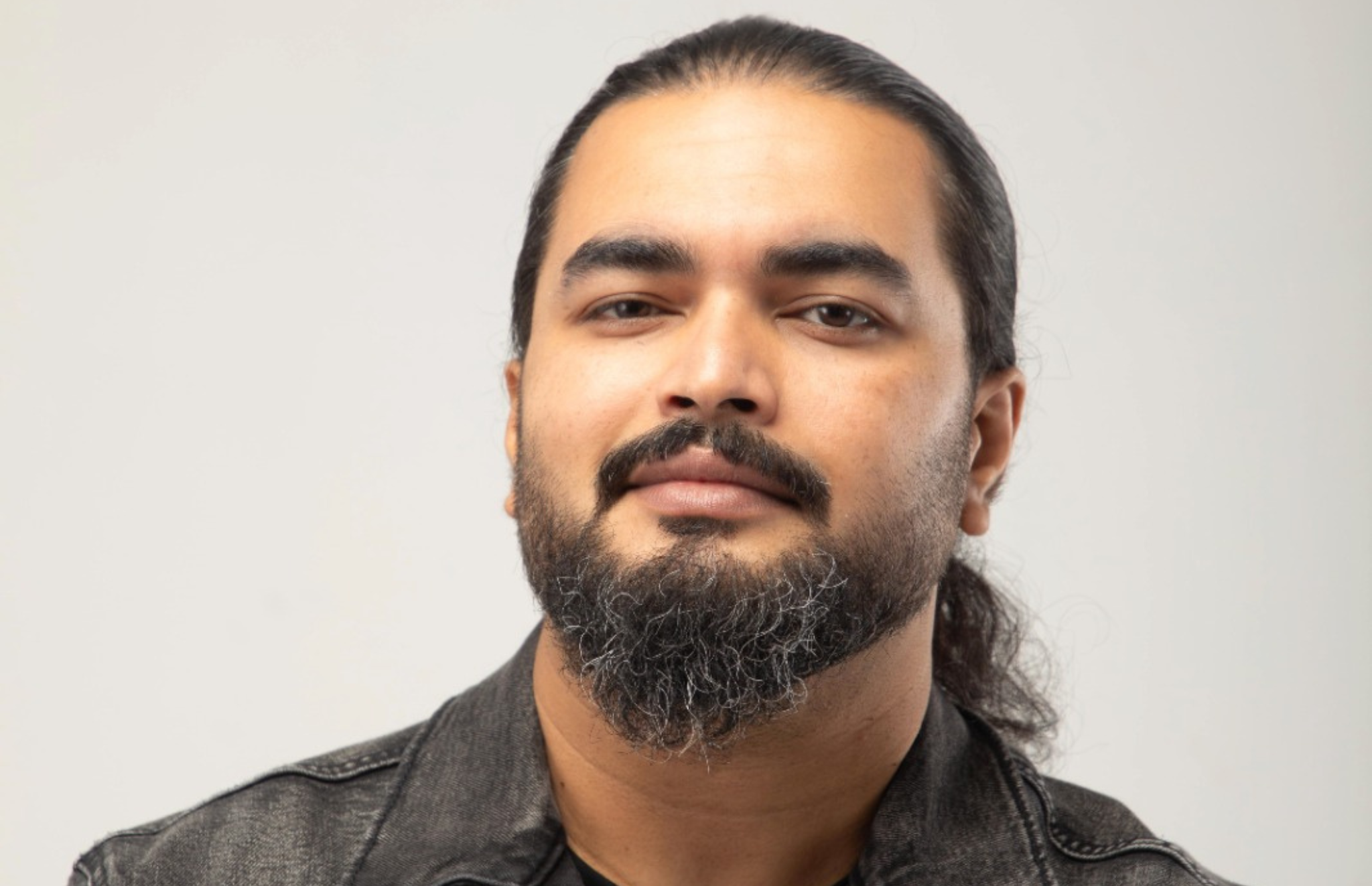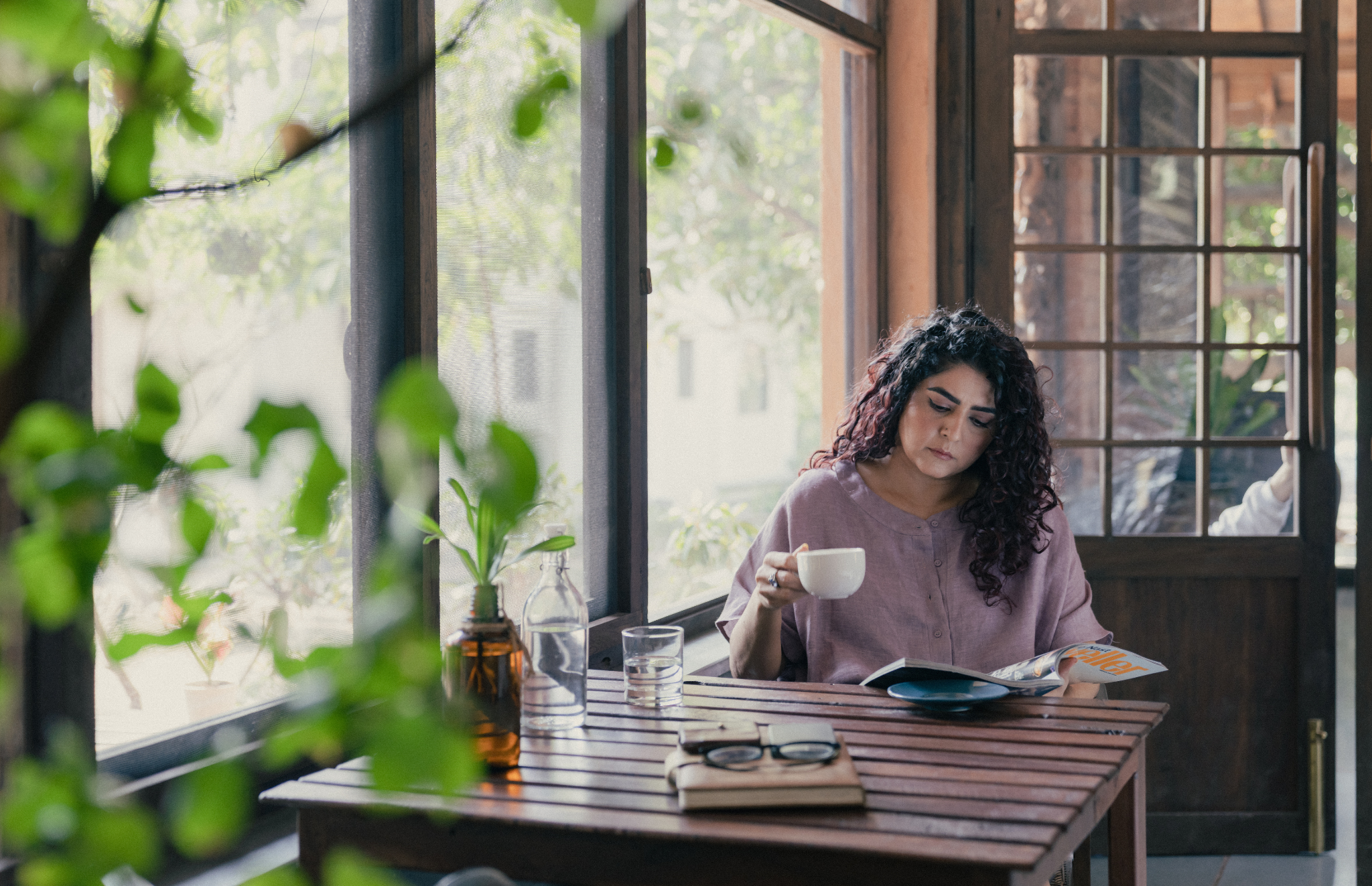Austin Young (Tranimal, Fallen Fruit) is a multidisciplinary artist whose trademark style interprets a nuanced visual language of beauty, Pop culture, art history, folk art, and transgressive underground exuberance. Whether he’s working in a photography- and video-based modes of performative portraiture, engaging in assertive visibility for Queer culture, or advocating for a community-based resource sharing culture through the literal and metaphoric prism of public fruit trees, Young’s interest is in illustrating the sublime qualities of humanity that moves us all forward. Young is also a cofounder of Fallen Fruit, a contemporary art collective that uses fruit as a material for projects, investigating the hyper-qualities of collaboration, and in its own way is also about challenging dominant paradigms.
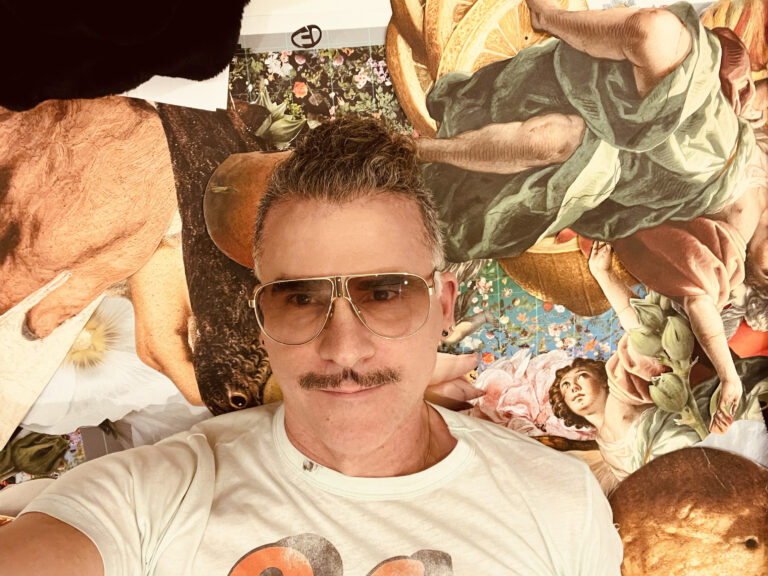
Photo courtesy: Austin Young
SP: How has attending Parsons School in Paris and growing up in Reno, Nevada, influenced your artistic perspective?
AY: We are formed by our youth. Reno, Nevada, “the biggest little city in the world,” was a conservative, small town in the ‘70s and ‘80s, and I did not fit in. I was sensitive, and effeminate, making me a target for prejudice. Many people at school were horrible to me. At first, it was confusing and hard, but then I decided to embrace it and accepted that I was an outsider. I worked at a record store in high school. I was an avid music collector, and I spent my time listening to music, looking at album covers, and reading magazines about pop culture. This is where I found my inspiration to make art — listening to Kate Bush, Siouxsie Sioux, Soft Cell, Toyah, Culture Club, Yaz, Japan, and The Eurythmics. When I finished high school, I went straight to San Francisco in 1984. It was a magical place to study art and find like-minded people. I studied painting in San Francisco and then at Parsons in Paris. In 1987, I made a spontaneous decision to become a photographer, left school, and moved to NYC, where I began to make art that reflected this community and, through portraiture, I sought to celebrate it.
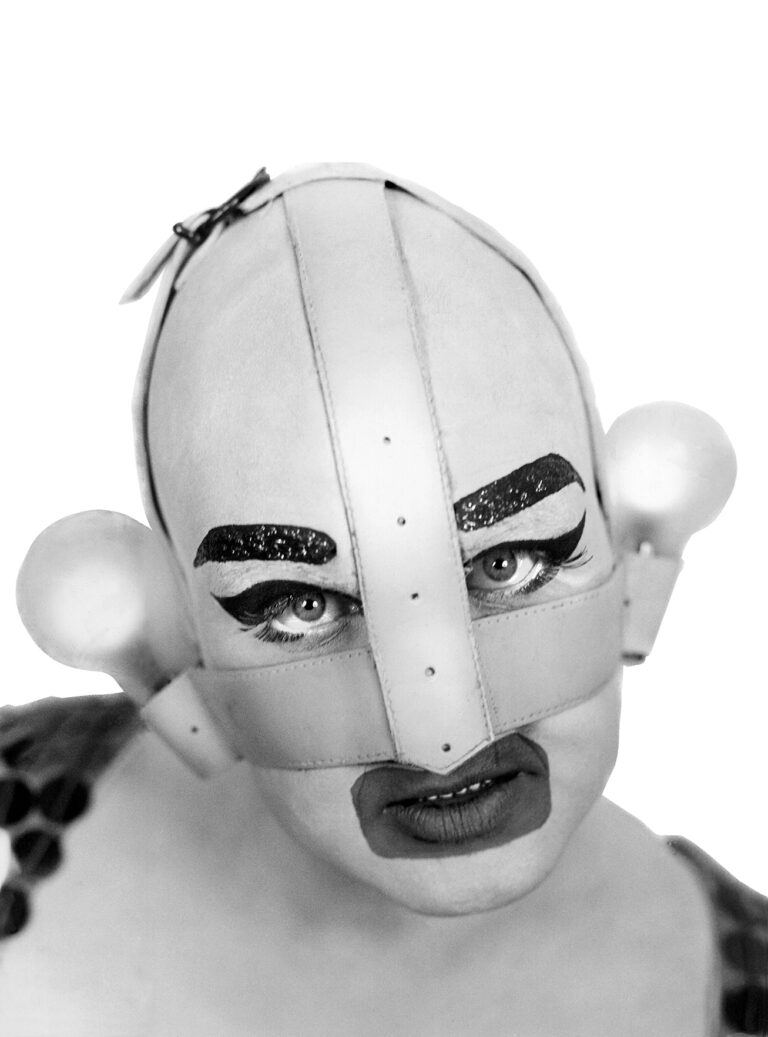
Photo courtesy: Austin Young
SP: How has acceptance of sexuality in art, as well as terms like “queer” and “drag,” grown throughout time and in the contemporary era among the creative community?
AY: Drag is political. Historically, drag queens were counterculture. Queerness has gone from a subculture to mainstream. Drag queens, once on the margins, are now celebrities with agents, publicists, and world tours. RuPaul’s Drag Race is an international success, and there is a renaissance of queer representation. In the USA, identity politics has become popular programming at museum exhibitions and in galleries. There are so many amazing artists, musicians, and filmmakers like Anohni, Taylor Mac, Justin Vivian Bond, Alaska, Jinkx Monsoon, Castles, Jeffrey Gibson, and Gus Van Zandt, etc.
In the ’70s and ’80s, people like Divine, Morrissey, David Bowie, and Andy Warhol were like oxygen. John Waters was a beacon of light with his sarcasm and camp, poking holes and finding cracks in conservative mainstream thought. There was starting to be more acceptance, and then AIDS happened, and being gay and gay sex were equated with death. It would be amazing if we could focus on our shared human experience instead of who we sleep with or what gender we are. But for now, visibility is as important as ever. People are at risk all over the world. Gay people still do not have equal rights in many countries, including India, and being gay or trans is punishable by death in Iran, Saudi Arabia, Somalia, and Nigeria.
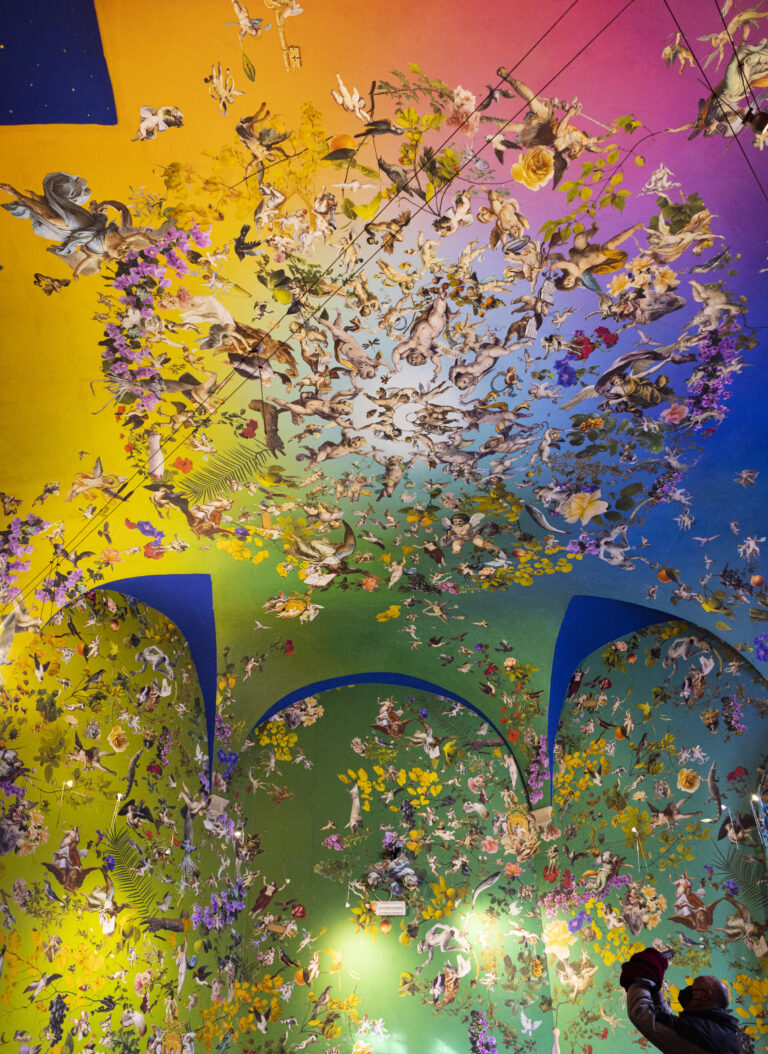
Photo courtesy: Fallen Fruit
SP: Could you give us an overview of your photography style? Is there a personal element to it?
AY: I am a visual thinker. I communicate in images and colour. My work is confrontational and sometimes funny. I’m a fan of magical realism and surrealism. I want to move people emotionally and viscerally. I want to open a doorway to other possible worlds through imagery. There is a sense of humour in my work, as well as confusion combined with beauty. I love when you are not sure what you are looking at. For example, early in my work, my idea was to photograph men who appeared to be women. I had a storefront in the Lower East Side in the 1980s and started taking portraits of drag queens and trans people like The Connie Girl, The International Chrysis, Glamamore (aka Mr. David), Codie Ravioli, Lady Bunny, RuPaul, Leigh Bowery, Chiclet, and more. I developed my style photographing these amazing people.
My artwork — especially my portraits — has often been situated in the queer community and a subculture of queer performance, gender, and identity. I also consider my artwork to be a social practice — creating, and affirming community.
SP: Which artists or movements have woven their essence into your work, and how do they resonate with you on a deeper level?
AY: I love the turning tide and ever-flowing nature of pop culture, art, music, and film on the edge of contemporary thought. I wanted to be a part of this conversation. I like art that opens your mind, changes the way you think about something, and moves culture. When I worked in a record store in Reno, I followed the latest music and magazines from London and the rest of the world, like FlexiPop Magazine, Interview, The Face, and i-D. Hanging out with friends, we would watch movies like The Hunger, Liquid Sky, Female Trouble, Starstruck, and Breaking Glass. I was really inspired by Leigh Bowery, and I ended up doing his portrait after I met him. When I was studying painting, I was attracted to the Symbolists, Aestheticism, the Surrealists, and Dadaism. I was also influenced by music like The Cocteau Twins and This Mortal Coil.
A big shift in my work happened when I started working with David Burns in 2002 and co-founded Fallen Fruit in 2004. It opened my work to a social, public art practice. I became much more aware and interested in making art about how people see themselves and form connections within an experience.
In 2018, my collaborative art with David Burns and Fallen Fruit was featured in Manifesta 12 in Palermo. Since then, I’ve been travelling and making art in Italy. Working in Italy has transformed my artwork and perspective. I find inspiration in the long history of humanity and expression that surrounds you when you visit a city like Rome. I love baroque art and am interested in exploring art beyond the scope of modernism, conventional gallery settings, and the concept of the ‘white box.’
When I was young, all I wanted to do was show in a gallery. I feel lucky that that never really happened for me. My art practice was not cultivated in a gallery but in public and social artwork.
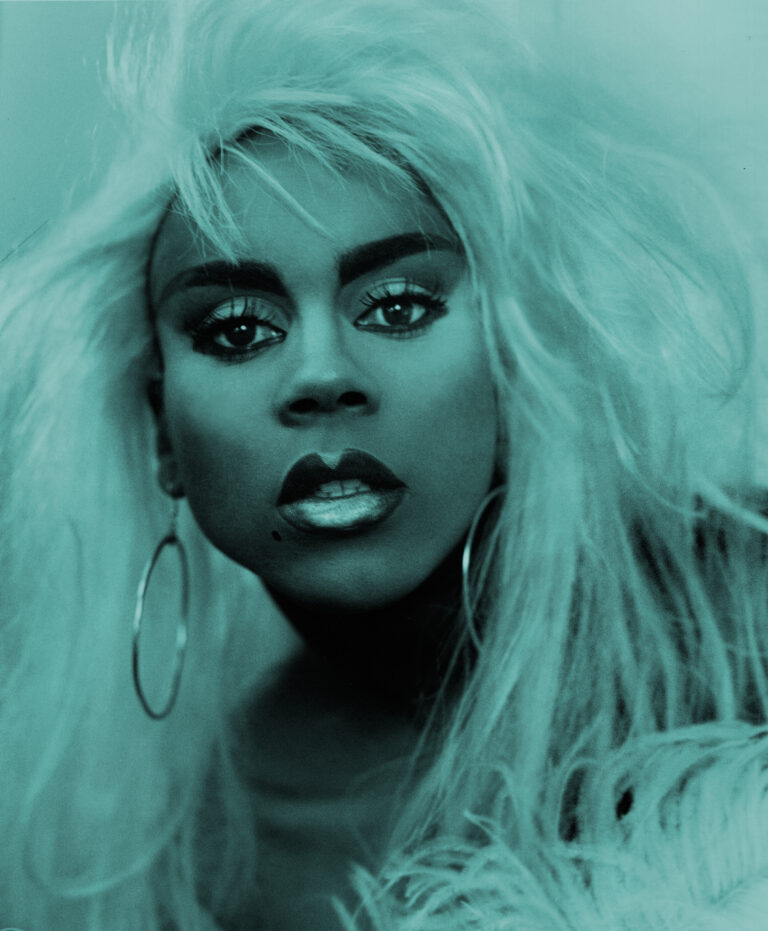
Photo courtesy: Austin Young
SP: Could you share behind the scenes and the thoughts you have while capturing the rawness and the true selves of the trans men portraits being exhibited in the ‘QUEER-ISH’ exhibition?
AY: The trans men in the photographs are people that I know from my social circles in Los Angeles – Marvel Rex, Freak Daddy, Stevie Trixx, Alex Budin, Buck Angel and more. I love portraits, and the simplicity and honesty of a nude portrait. I’ve been taking portraits of trans people for years and recently exhibited some of my nude portraits of trans men in Mexico at OPCPV in an exhibition entitled ‘Queer / Cuir,’ and in LA at Scripps in an exhibition curated by Ken Gonzalez Day called ‘Queer-ish.’ I’m interested in the visceral emotional experience of being human and want to portray this through imagery. I wanted to make these portraits as simple as possible. So, there is nothing but the figure on a white background. These images share a confrontational throughline with my artwork. The Statue of David was radical at the time it was made, and it’s incredible that a simple nude can still be provocative 500 years later. In this work, I aim to create a new idealised archetype. Society asks us to fit into a box, and for this reason, I find the trans experience to be an ultimate model of self-expression and freedom, a kind of magical liberation transforming from one sex to another. What does it mean to be a ‘man’? How can we express ourselves authentically? Visibility is important, and in a way, these images function as activism — in a gallery setting.
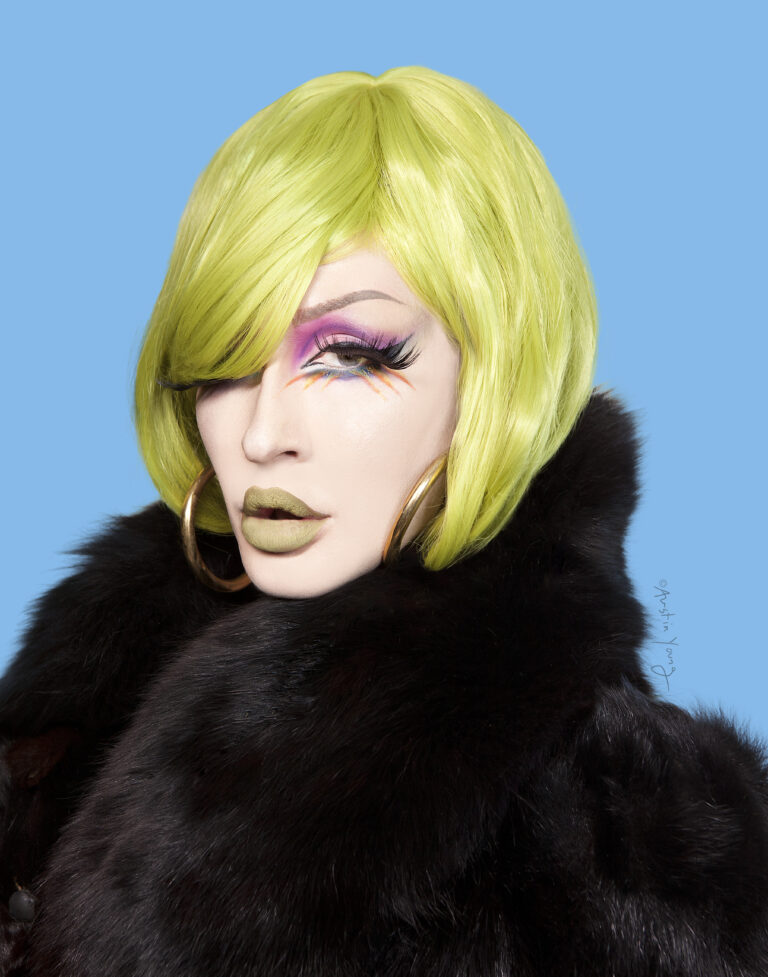
Photo courtesy: Austin Young
SP: In your opinion, how have the conversations in Tranimal Workshop on gender, identity, and aesthetics evolved over time? In what ways do you think cultural dialogues help you express yourself, and how do you continue to change along these lines?
AY: In Western culture, we are not encouraged to look inward and find out who we are; we are taught how we are supposed to be — who we should be. Popular culture, by design, cultivates negative self-perception. I think my artwork is a reaction to our culture of comparison. I am interested in subverting mainstream ideas of beauty and gender.
Inspired by my social practice artwork with Fallen Fruit, Tranimal Workshop began in 2008 at Machine Project Gallery in Los Angeles, as a collaboration with Squeaky Blonde, Fade-Dra, Saskia Wilson-Brown, and everyone we invited to participate, including the public. The idea was that, as an artwork, the public would come to a workshop in the gallery space, where we would transform them with trash, wigs, and whatever we had on hand into a ‘Tranimal’ based on the drag aesthetics of Squeaky and Fade-Dra. Tranimal Workshop was a liberating social practice artwork experienced in the moment, layered with camp, and with an aesthetic object as the outcome: a formal portrait taken by me. I wanted to create images that were formal in construction but confrontational and confusing at the same time. Playing with tropes of classical beauty — beauty being the entry point — I wanted to pose questions, not provide answers.
In my portraiture since the 1980s and deepening with ‘Tranimal Workshop,’ I was exploring questions like: What is beauty? What is gender? Who are we supposed to be? What are we supposed to look like? Am I a man? Does it matter? This exploration was a survival tool for me in the past. And now, in the present moment, I think the conversation about gender has really transformed through public awareness and acceptance of diversity.
Identity is about separation. My work with Fallen Fruit has shifted my focus. I’m interested in what brings us together. Can we accept our differences without identifying with them? This conversation is exciting me now in my artwork. The world is divided by classism, politics, race, borders, and gender. These are social constructs. The current trend and cultural fascination with mushrooms and microdosing could expand people’s perceptions and aesthetics. It will be interesting to see what happens in the next 10 years.
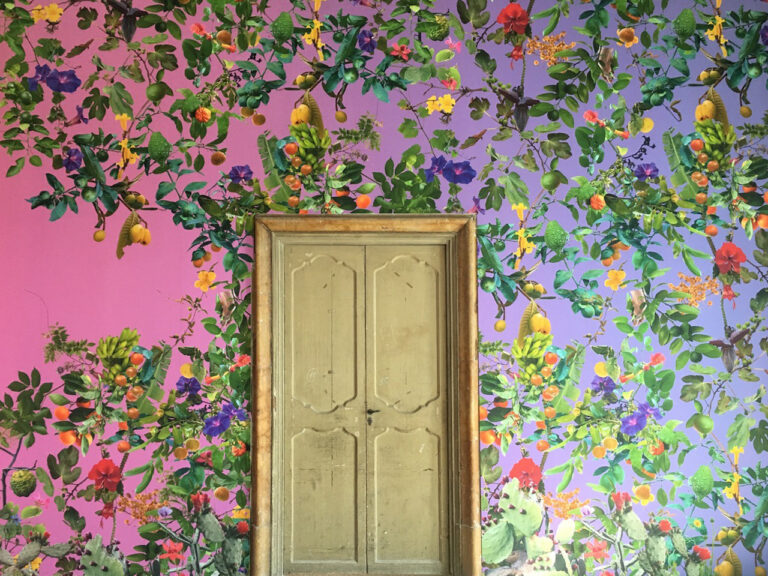
Photo courtesy: Fallen Fruit
SP: Could you walk us through your conception of “Fallen Fruit” and how you visualise the aesthetic value of a fruit tree in public spaces?
AY: Fallen Fruit is a living art practice that has transformed throughout the 20 years we have worked together. Fallen Fruit began as a collaboration with David Burns and Matias Viegener in 2004. By 2013, David and I continued the collaboration as a duo. In 2004, we began by mapping fruit in public spaces as contemporary artwork. We responded to a call for projects in the Journal of Aesthetics and Protest requesting projects that looked like activism but were not actually against anything.
Fruit is something we all loved. We would share the fruit we had growing in our yards. We came up with the idea to map the fruit that is in public spaces or perhaps a tree from someone’s yard growing over public space. We wrote a manifesto about cities planting resources for sharing, like fruit, in public spaces instead of useless ornamentals. As contemporary artworks, we started making jam with the public, donating trees for planting in public spaces, and giving tours of fruit in Los Angeles.
Social art wasn’t in a “white cube.” Or if it was, there were not any objects or things on the wall. The artworks were about how people related within an experience. There were great curators like Mark Allen, Veronica Wyman, Fritz Haeg, Irene Tsatsos, and Anja Franke who were defining this moment in time with a new movement of ‘social practice.’ Fallen Fruit was a part of this exciting moment. I think of this time as a renaissance in Los Angeles.
Fruit is by its nature beautiful and something that everyone loves and shares in common. Fruit is not only aesthetic, but it’s also symbolic of a gift. Our aesthetic practice really began as a way to promote the project on social media.
We made our first wallpaper in 2010 for our yearlong exhibition and residency at LACMA. We began to see the wallpapers as portraits of a city. This began a long practice of engaging museum archives to create large-scale artworks. We did this at GOMA, the Atlanta Contemporary, NGV Triennial, Portland Art Museum, and Newcomb Art Museum in ambitious multi-room, large-scale exhibitions.
A powerful moment and shift for David and me was at the Manifesta 12 Biennale. In this case, we created a beautiful, immersive, site-specific artwork in a room with just a wall covering and a map of public fruit in Palermo in the centre of the room. It became the most photographed thing in Sicily that year on social media.
These artworks by Fallen Fruit are always site-specific, and we see them as portraits of a place. There are multiple perspectives woven together in a giant kaleidoscope encompassing different centuries, cultural objects, and local flora and fauna. I see these as a response to the ‘information age’ — the work collects memories of culture, experience, and the beauty of life and spins it around in beautiful visual magic. Ultimately, these artworks become places that change the way you feel when you enter them and find your place within them. They are meditative spaces that inspire joy.
I currently have a solo artwork on view alongside the Venice Biennale called “Marriage of the Sea” by Austin Young / Fallen Fruit also in Italy. I’m installing a ceiling mural commissioned by the priest at Chiesa di Sant’Aniello in Cosenza, Italy. David Burns and I are opening an exhibition at The Parrish Museum in The Hamptons and a permanent artwork at The Nevada Museum of Art in Reno.
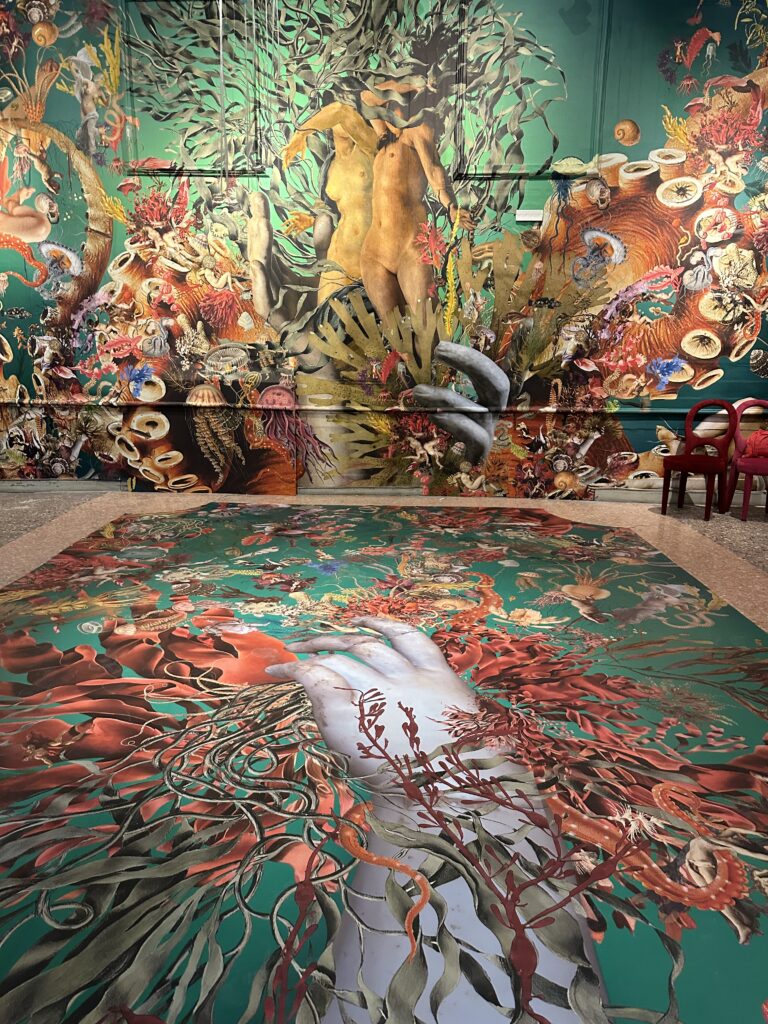
Photo courtesy: Austin Young / Fallen Fruit
SP: What was your inspiration for your new artwork “Marriage of the Sea (the rape of Venice)” in Venice?
AY: Everywhere I travel, I’m always thinking about history and culture and how precious they are. The industrial age polluted the delicate environment of the lagoon around Venice, and now the Information Age, rising waters, and short-term rentals put culture at risk – the people who live there, their language, food, and community. During local research for the project, I was inspired by the painted Baroque ceilings and wall decorations in palazzos and churches. Many use allegory, and I also wanted to use this strategy to tell this story in my site-specific artwork there. At the opening celebration, performance/food artist Irene Machetti engaged with the artwork through food, scent, and sound. Together, in a ceremony with candles, we performed wedding vows where everyone at the opening married the sea and agreed “to love and protect it Today, Tomorrow, and Forever.”
SP: What advice would you like to share with the young and emerging artists who are navigating the art world and finding their artistic voices?
AY: Having an art career is uncharted territory — we must find our own way and make it up as we go along. There is nothing easy about being an artist. Decide what you want to do and then focus on one medium. If art is your passion, NEVER stop. Are you willing to keep doing it if you’re not successful? Even if you don’t make money and if no one will show your work? You need this kind of commitment to be an artist. Perseverance is the magic key. Do you need a gallery? I never had one. I kind of got into the art world through a side door. The key is to make art no matter what. Perfectionism is a creative killer. Show your work even if you are scared to show it. Show your work even if it’s not perfect. Just put it out there. Making a new piece of art every day can really help you find your voice.
Having any sort of career is all about relationships. Leave a trail of goodwill. Elton John always sends handwritten thank-you notes. The world is small. First impressions are everything. Cultivate relationships. Remember people’s names. The intern or assistant you are nice to today may be the director of MoMA tomorrow. Go to openings and
meet as many people in the art world as you can: artists, curators, donors, collectors. Be prepared to show your artwork wherever you are. If someone gives you their contact, follow up with an email or text the same day. Keep a journal. Practise automatic writing. Meditate. Find a mentor. Try never to say something you don’t mean. Learn to follow your intuition. “Comparison is the killer of joy.” Don’t feel the need to answer someone right away—say something like, “I’ll think about it and get back to you.”
Images Courtesy: Austin Young, David Allen Burns, and Fallen Fruit
Find out more about the artist and his artworks:

